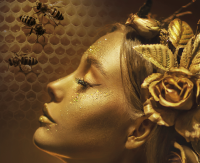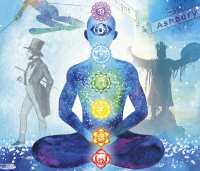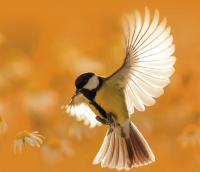

No animal is more deeply embedded in the psyche of humanity than sheep. Our language is replete with phrases, sayings and idioms related to this animal. We speak about a ‘dyed in the wool’ individual for someone whose beliefs are particularly deep-seated, but we accuse those who have no specific opinion and who allow themselves to be led around of being ‘sheep’. Someone who has been duped and who loses his or her money as a result is said to have been ‘fleeced’ and if we suspect we are being lied to we might say that a particular individual is ‘spinning a yarn’.
If we are forced to take a risk, we may decide to go that extra step because, as we say, ‘we might as well be hung for a sheep as a lamb’, whilst a woman who tries to convince the world she is much younger or more attractive than she actually is can be unkindly referred to as ‘mutton dressed as lamb.’ When we cannot follow someone’s reasoning we have ‘lost the thread’ and if we find a person to be particularly annoying we might suggest that, like sheep worried by a dog, they are ‘driving us mad’.
It is no wonder at all that sheep figure so prominently in our speech because they represent a primary reason for everything we are – all that we have become across thousands of years of civilization – even if we do not consciously appreciate the fact. Although most of us these days are completely isolated from farming and the land, it isn’t so long since our dependence on the countryside was everything to us. Originally the ancestors of everyone reading this book were farmers. The natural response to the flow of the seasons; the needs of planting, harvesting and animal husbandry lie so deep within us that they are endemic. Practically everyone feels less stressed and more at ease when they are amidst the rolling acres or wide fertile plains that once ruled our lives. Sheep were a crucially important part of the farming scene and they were the world’s first domestic animal.

There are well over 260 recognised breeds of sheep in the world today but it is certain that all of them ultimately came from just two wild ancestors. The known parent of all modern sheep is the Asiatic Mouflon (Ovis Orientalis). This animal, though definitely a sheep, looks very much like a wild goat. It still survives in large numbers in the wild in the mountains of Asia Minor and in Southern Iran and was probably even more widespread before the advent of farming. The Asiatic Mouflon is not a particularly large animal and it appears in a variety of colours, with red predominating. It is closely related to the European Mouflon (Ovis Orientalis Musimon), which inhabits Sardinia and Corsica, but it is now thought that the European Mouflon never developed as an independent species and merely represents an example of early, domesticated sheep that escaped and reverted to a wild state.
Exactly when the paths of humans and sheep first crossed will never be known for certain. There is no doubt that to our huntergatherer ancestors the sheep would have been a significant prey species and it may well have been our preference for mutton that aided our long journey towards farming and a settled life. Over 8,000 years ago it is likely that a hunter somewhere in West Asia killed a wild Mouflon ewe and discovered that she had with her a well-grown lamb. What probably happened is that the hunter had one of those leaps of logic that have set our own species apart. It occurred to him that if he took the lamb back to his nomadic camp and there kept it tethered, it would graze and eventually become a much bigger sheep. It would then be available to eat at a time when hunting wasn’t so good and with no effort on his part. Within this idea lay the seeds of animal husbandry and all that followed.
Sheep would have fitted very well with the life of hunter-gatherers who of necessity, were always on the move. The natural tendency of sheep to stay together in flocks allied to the very early domestication of the dog meant that the developing herds could accompany the hunter-gatherers to their seasonal hunting grounds. Thus the first pastoralists appeared and over time the sheep became so important that its needs took precedence over those of the far less reliable hunt. Sheep offered not only meat but also milk, in addition to skins for fine leather and wool for clothing. The wandering continued, but now it was to find the best pasture. There are still many examples of pastoralists to be found in the world and the civilizations that sprang up in the Near and Middle East were founded by such peoples who eventually gave up their nomadic lifestyles. With a settled life, the planting and harvesting of crops also began to take place but this may never have happened, or been considerably delayed, if sheep had not offered such a significant incentive.
This is an extract from SHEEP by Alan Butler - A gripping tale of the history of our civilisation through man's relationship with sheep.

Categories:
0 comments on this article







